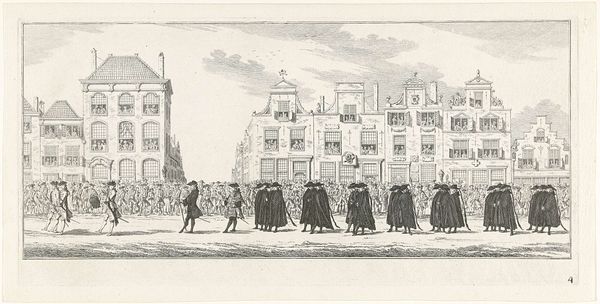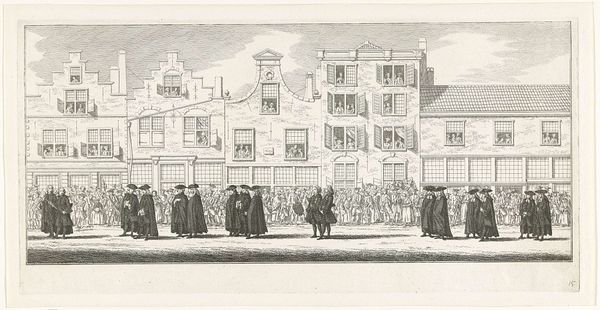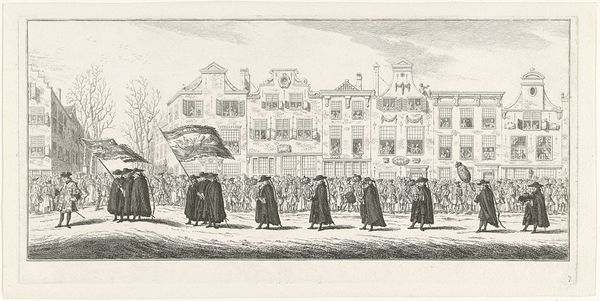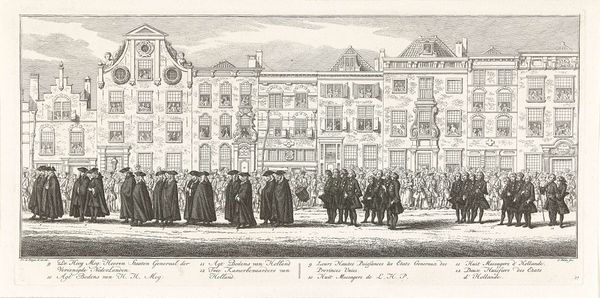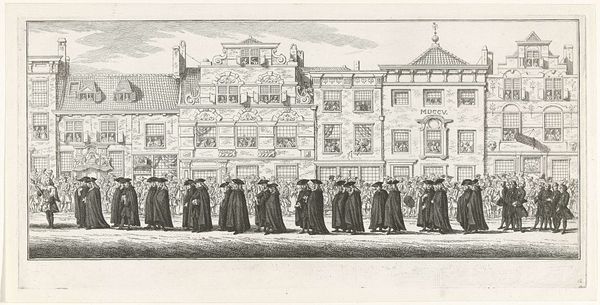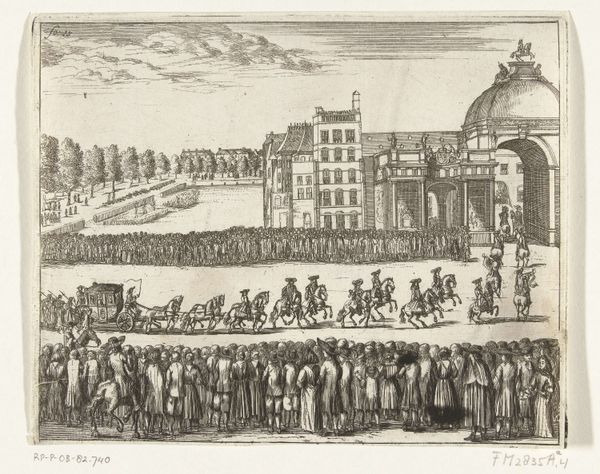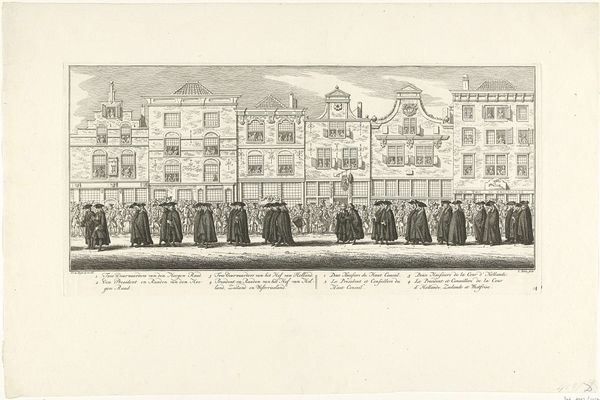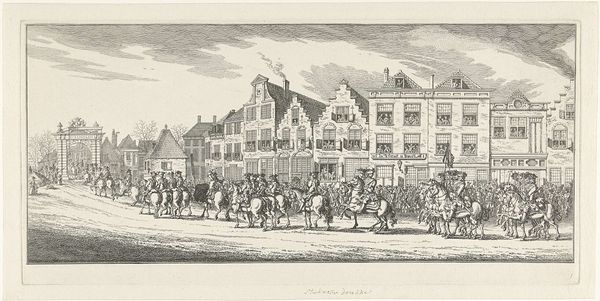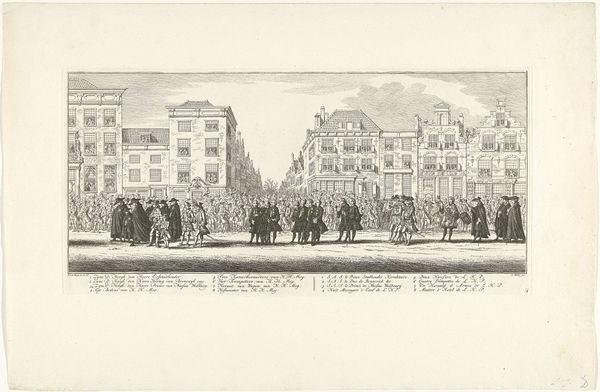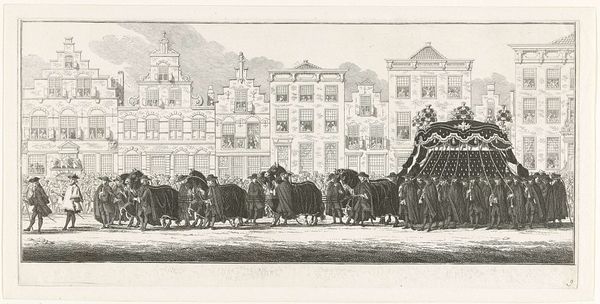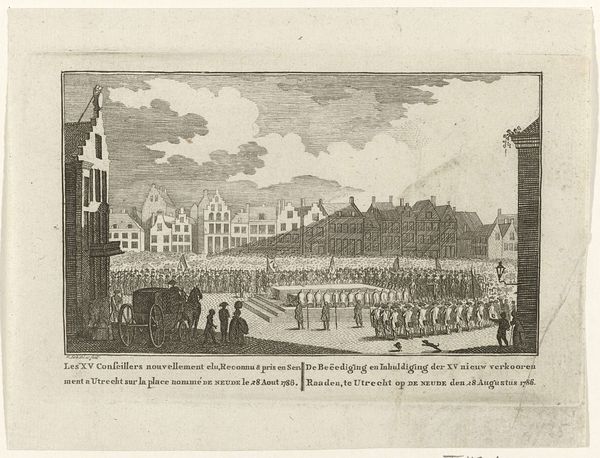
Hofdienaren in de lijkstoet van Anna van Hannover te Delft, 1759 1759 - 1761
0:00
0:00
print, engraving
#
baroque
# print
#
pen illustration
#
old engraving style
#
group-portraits
#
line
#
cityscape
#
history-painting
#
engraving
Dimensions: height 190 mm, width 395 mm
Copyright: Rijks Museum: Open Domain
Curator: Looking at this engraving, there's an air of formality, a structured melancholy that pervades the scene. Editor: Indeed. This piece by Simon Fokke, created between 1759 and 1761, depicts the funeral procession of Anna van Hannover in Delft. You can see the procession of mourners stretched before the buildings on the city square. Curator: The repeating patterns create a solemn, almost hypnotic rhythm, from the marching figures to the architectural detailing, and all those faces pressed at the windows... Editor: Fokke captured a particular moment of political and social history. Anna van Hannover was the wife of Prince William IV, and her death marked a significant point in Dutch history, influencing the power dynamics. Curator: Precisely. And consider the iconography! Those cloaked figures evoke a sense of uniformity, reflecting a societal order and adherence to tradition. Their somber garb hides their individual stories, adding to the collective grief. Editor: I'm drawn to how Fokke renders the city itself. The buildings loom, almost like silent witnesses to the procession. It speaks to how public spaces become stages for displays of power and mourning. Delft becomes a character itself in this historical drama. Curator: See the details, like those individuals watching from the windows. Their faces, barely discernible, become like symbolic placeholders. Each a private moment intersecting with public spectacle, suggesting grief becomes performance for both participant and observer. Editor: I agree, the architecture serves a symbolic purpose as a static backdrop for dynastic procession. How intriguing to analyze such public emotion through something as rigid as architectural rendering and the precision of an engraving. Curator: What truly resonates with me is how the composition evokes a timeless quality, transcending its specific historical moment, hinting at our continuous need for ritual to cope with mortality. Editor: It prompts questions about the relationship between art, history, and how societies grapple with death and the rituals of state. I leave contemplating how power memorialized in a moment is also fleeting, isn't it?
Comments
No comments
Be the first to comment and join the conversation on the ultimate creative platform.
